
Poison Ivy, also known simply as Ivy, is a fictional character appearing in American comic books published by DC Comics, commonly in Batman stories. She was created by Robert Kanigher and Carmine Infantino, and first appeared in Batman #181.
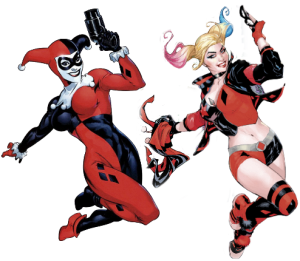
Harley Quinn is a character appearing in American comic books produced by DC Comics. She was created by Paul Dini and Bruce Timm for Batman: The Animated Series as a henchwoman for the supervillain Joker, debuting in its 22nd episode, "Joker's Favor", on September 11, 1992. While intended to appear in one episode, Quinn became a recurring character within the DC Animated Universe (DCAU) as the Joker's sidekick and love interest, and was adapted into DC Comics' canon seven years later, beginning with the one-shot Batman: Harley Quinn #1. Quinn's origin story features her as a former psychologist at Gotham City's Arkham Asylum who was manipulated by and fell in love with the Joker, her patient, eventually becoming his accomplice and lover. The character's alias is a play on the stock character Harlequin from the 16th-century Italian theater commedia dell'arte.

Man-Bat is a fictional character appearing in American comic books published by DC Comics. Introduced in Detective Comics #400 as an enemy of the superhero Batman, the character belongs to the collective of adversaries that make up his rogues gallery. Originally portrayed as a supervillain, later incarnations show the Man-Bat as a sympathetic villain or antihero.

The Mad Hatter is a supervillain appearing in comic books published by DC Comics, commonly as an adversary of the superhero Batman. He is modeled after the Hatter from Lewis Carroll's novel Alice's Adventures in Wonderland, a character often called the "Mad Hatter" in adaptations of Carroll. A scientist who invents and uses technological mind control devices to influence and manipulate the minds of his victims, the Mad Hatter is one of Batman's most enduring enemies and belongs to the collective of adversaries that make up Batman's rogues gallery.

The Ventriloquist is the name of multiple supervillains appearing in American comic books and other media published by DC Comics. All of the Ventriloquist's versions are enemies of Batman, belonging to the collective of adversaries that make up Batman's rogues gallery.

Firefly is a supervillain appearing in American comic books published by DC Comics. Created by France Herron and Dick Sprang, he made his debut in Detective Comics #184. Initially portrayed as a criminal who utilized lighting effects to commit robberies, Firefly was later reimagined as a sociopathic pyromaniac with an obsessive compulsion to start fires following Crisis on Infinite Earths' reboot of the DC Universe in the 1980s. This darker depiction of the character has since endured as one of the superhero Batman's most recurring enemies and belongs to the collective of adversaries that make up his central rogues gallery.

Gotham Girls is an American Flash animated series focusing on several of the female characters of Gotham City, produced jointly by Warner Bros. Animation and Noodle Soup Productions. The series, which ran from 2000 to 2002, starred Harley Quinn, Poison Ivy, Batgirl, Catwoman, Renee Montoya and Zatanna in short stories of varying length about the daily lives of the characters. It takes place in the DC Animated Universe, with Arleen Sorkin, Diane Pershing, Adrienne Barbeau, Tara Strong, and Bob Hastings reprising their roles from Batman the Animated Series and The New Batman Adventures.
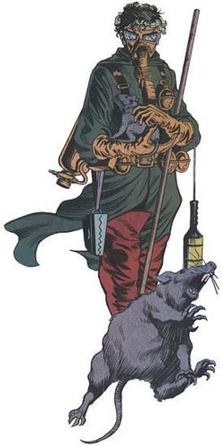
Ratcatcher is a character appearing in American comic books and other media published by DC Comics, primarily as an enemy of Batman. He belongs to the collective of adversaries that make up the Dark Knight's rogues gallery. Once an actual rat-catcher in Gotham City, Flannegan sank into a life of crime. Calling himself the Ratcatcher because of his special ability to communicate with and train rats, Flannegan has used his minions to plague Gotham on more than one occasion by unleashing hordes of the vermin.
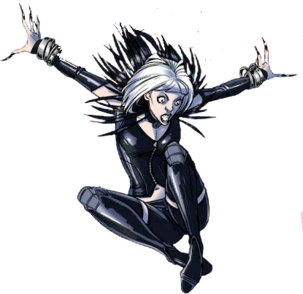
Magpie is a supervillain appearing in American comic books published by DC Comics. She was created by John Byrne, and first appeared in The Man of Steel #3.
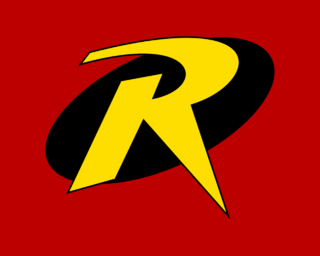
In addition to DC Comics books, the superhero Robin also appears in other media, such as films, television and radio. Dick Grayson, Jason Todd, Tim Drake, Stephanie Brown and Damian Wayne are examples of the characters who use the name Robin.
Originally created in 1967, the fictional comic book character Barbara Gordon has been adapted into various other forms of media. The character has appeared in both live action and animated television series and films, as well as in video games in her alter-egos as both Batgirl and Oracle.

The Joker, a supervillain in DC Comics and archenemy of the superhero Batman, has appeared in various media. WorldCat records over 250 productions featuring the Joker as a subject, including films, television series, books, and video games. Live-action films featuring the character are typically the most successful.
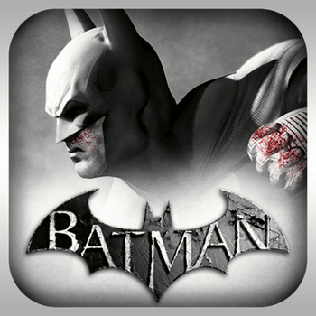
Batman: Arkham City Lockdown is a 2011 fighting video game developed by NetherRealm Studios and published by Warner Bros. Interactive Entertainment. Based on the DC Comics superhero Batman, it is a spin-off to Batman: Arkham City, and the first mobile game in the Batman: Arkham series. Set a few weeks before Arkham City, Arkham City Lockdown follows Batman as he attempts to capture several villains who have escaped from Arkham Asylum and are causing mayhem in the streets of Gotham City. As Batman, players fight enemies using melee combat, and earn points for doing so, which can be used to upgrade Batman's stats or to unlock gadgets and alternate costumes.
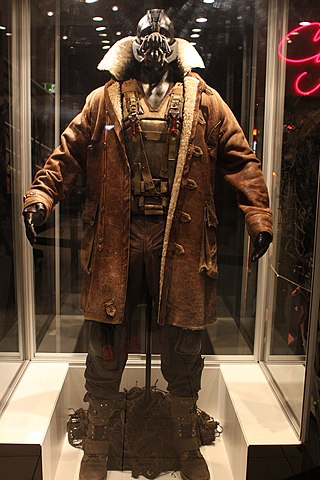
Bane was originally a comic book character and Batman's adversary, but has appeared in several other forms of media. He has been portrayed in live action by Robert Swenson in Batman & Robin, Tom Hardy in The Dark Knight Rises, and Shane West in Gotham.
Catwoman is a fictional character first appearing in issue 1 of the Batman comic book. After her debut she would appear in many forms of media including live-action and animated film, radio, live-action and animated television, records, video games, web series, live performance, and podcasts. The character has made live-action appearances in the Batman television series (1966–68), its film adaptation Batman (1966), Batman Returns (1992), Catwoman (2004),The Dark Knight Rises (2012), Gotham (2014–19), and The Batman (2022). The character has also appeared in numerous animated television series and movies, most notably Batman: The Animated Series (1992–95) and The Lego Batman Movie (2017), as well as video games such as the Batman: Arkham series.

The Riddler, a supervillain in DC Comics and an adversary of the superhero Batman, has been adapted into numerous forms of media, including feature films, television series, and video games. The character has been portrayed in live-action by Frank Gorshin and John Astin in the 1960s television series Batman, Jim Carrey in the 1995 film Batman Forever, Cory Michael Smith in the 2014 Fox series Gotham, and Paul Dano in the 2022 film The Batman. Actors who have voiced the Riddler include John Glover in the DC animated universe, Robert Englund in The Batman, and Wally Wingert in the Batman: Arkham video games.
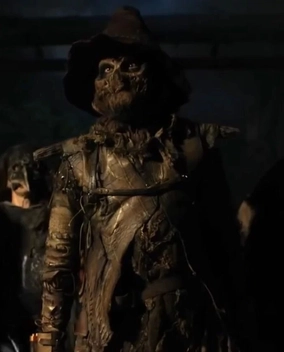
The Scarecrow, a supervillain in DC Comics and an adversary of the superhero Batman, has been adapted in various forms of media, including films, television series and video games.

The fictional character Two-Face was created by Bob Kane and Bill Finger and first appeared in Detective Comics #66. However, he did not appear outside comics until half a century later in Batman: The Animated Series. Two-Face has since been substantially adapted from the comics into various forms of media, such as feature films, television series and video games. Two-Face has been voiced by Richard Moll in the DC Animated Universe, Troy Baker in the Batman: Arkham series, Billy Dee Williams in The Lego Batman Movie, and William Shatner in Batman vs. Two-Face. His live-action portrayals include Billy Dee Williams in Batman (1989), Tommy Lee Jones in Batman Forever, Aaron Eckhart in The Dark Knight, and Nicholas D'Agosto in the television series Gotham. In 2009, Two-Face was ranked #12 on IGN's list of the Top 100 Comic Book Villains of All Time.

The fictional supervillain Penguin, created by Bob Kane and Bill Finger, made his first appearance in Detective Comics #58. Since then, he has been adapted into other forms of media, including feature films, television series, and video games.

Mr. Freeze was originally a comic book character and Batman's adversary, but has been substantially adapted from the comics into various forms of media, including feature films, television series, and video games. The character has been portrayed in live-action by George Sanders, Otto Preminger, and Eli Wallach in the Batman television series; by Arnold Schwarzenegger in the 1997 film Batman & Robin; and by Nathan Darrow on the Fox crime series Gotham. He has also been voiced by Michael Ansara in the DC Animated Universe and Maurice LaMarche in the Batman: Arkham video game franchise.

















